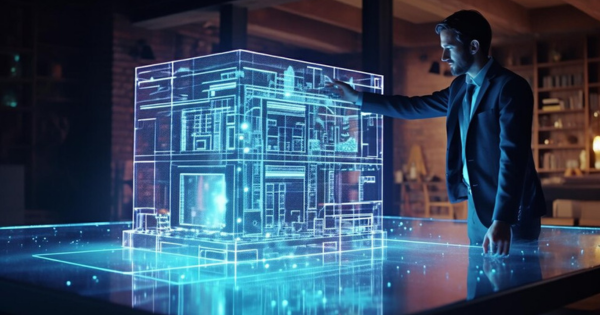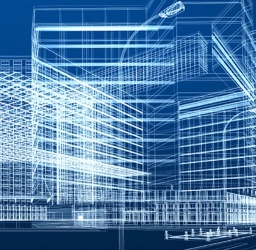7 BIM Trends with Growing Adoption for 2024

Welcome to our 2024 update on the MEP sector within the AEC industry! With BIM expected to grow by 16% from 2023 to 2032, it is revolutionizing how we design and manage MEP projects. This blog explores the latest BIM trends reshaping our strategies in MEP projects. Join us as we discover how BIM is transforming our industry and driving us toward a more efficient and innovative future. So, what’s trending?
The Rise of Digital Twins Digital Twin technology in combination with BIM is transforming the MEP sector. This synergy emphasizes energy efficiency, cost-effectiveness, and time optimization in MEP projects. A high-quality BIM model is crucial as it mirrors the physical and functional characteristics of MEP systems. The Digital Twin offers real-time data and predictive analytics, optimizing energy use, reducing operational costs, and streamlining maintenance, heralding a new era of innovation in the MEP sector.
Pointclouds Connected with Data and Information The integration of point clouds, data, and BIM is significantly transforming the MEP sector by enhancing the design, construction, and maintenance phases. Point clouds enriched with material specifics and sensor data allow for less modeling in maintenance and more detailed information when planning projects. This integration is setting new standards in the MEP field, leading to smarter construction practices and more sustainable operations.
Available BIM Professional Courses right now in Cyprus by UDC Training
10/05/2024 - BIM Management - Archicad Template Creation (21hrs)
14/05/2024 - Managing Design Options in Archicad (9hrs)
04/06/2024 - Archicad Teamwork and Hotlinking (12hrs)
14/06/2024 - Advanced List, Legend & Schedule Creation in Archicad (9hrs)
Interoperability and Open BIM Standards The construction industry is embracing more integrative workflows, enabled by open BIM standards, which facilitate information exchange among different software systems. This trend enhances collaboration and supports transparent project execution. Outsourcing BIM services to specialists like ADDMORE Services ensures projects stay up-to-date with the latest in interoperability standards and BIM advancements.
Prefabrication and Modular Construction Prefabrication and modular construction combined with BIM are revolutionizing construction, especially in quickly assembling complex structures like healthcare facilities and high-rises. This method ensures precision and reduces construction timelines, enhancing overall project efficiency.
Blockchain for Data Security Blockchain is securing building project data, ensuring trustworthiness by maintaining a permanent record of all data changes. This technology supports smooth collaboration on large projects by keeping information accurate and unchanged, proving essential for managing complex construction projects efficiently.
IoT in BIM The integration of the Internet of Things (IoT) with BIM in MEP systems offers real-time data collection and system management, boosting efficiency and enabling predictive maintenance. This advancement promises smarter, more responsive building environments through continuous monitoring and control.
Artificial Intelligence (AI) and Machine Learning (ML) Integration AI in BIM is automating complex tasks and enhancing the functionality of BIM software. This integration streamlines workflows and improves decision-making in construction projects. AI-driven tools are also promoting sustainable building practices by optimizing resource use and reducing waste.
Final Thoughts The BIM trends of 2024 are significantly impacting the MEP sector. These innovations are not only advancing our technical capabilities but also encouraging smarter and more sustainable practices. We invite engineering professionals and the BIM community to join us in embracing these changes. Together, we can forge a smarter, more efficient future in construction and building management. Stay tuned for more updates and innovations from us at DIBS42.
Share:
Διαβάστε Επίσης
Το BIM, ως πλατφόρμα ψηφιακής αναπαράστασης και διαχείρισης των πληροφοριών ενός κτιρίου
Few names in the world of architecture resonate with as much reverence and awe as Antonio Gaudí.
 Ελληνικά
Ελληνικά  English
English


